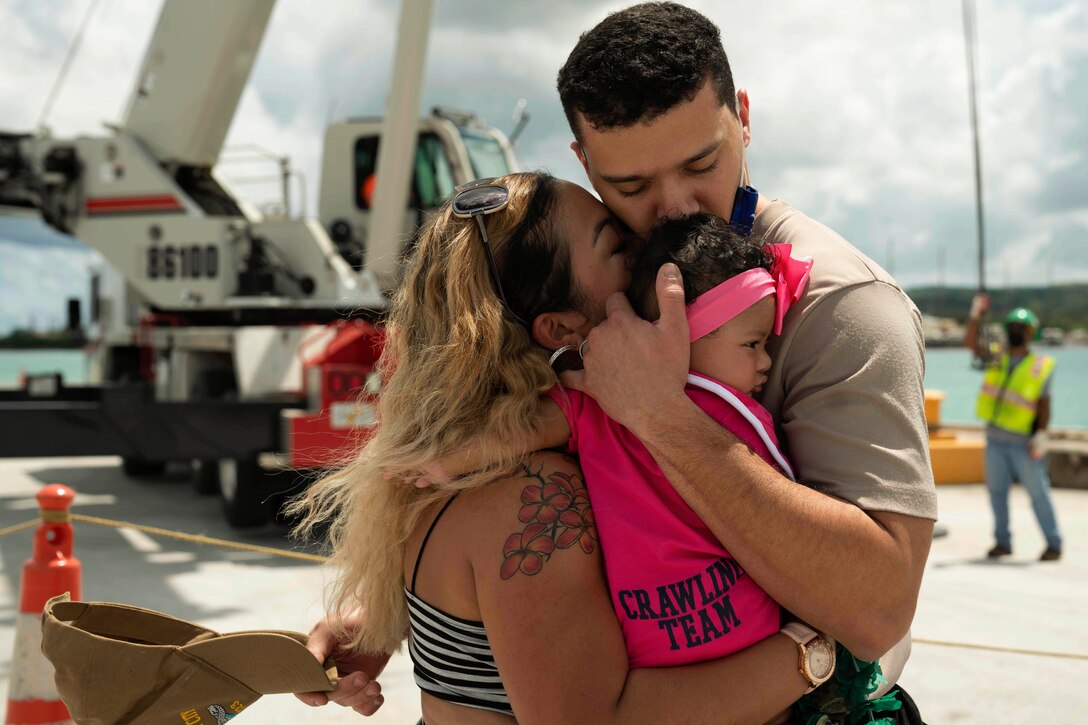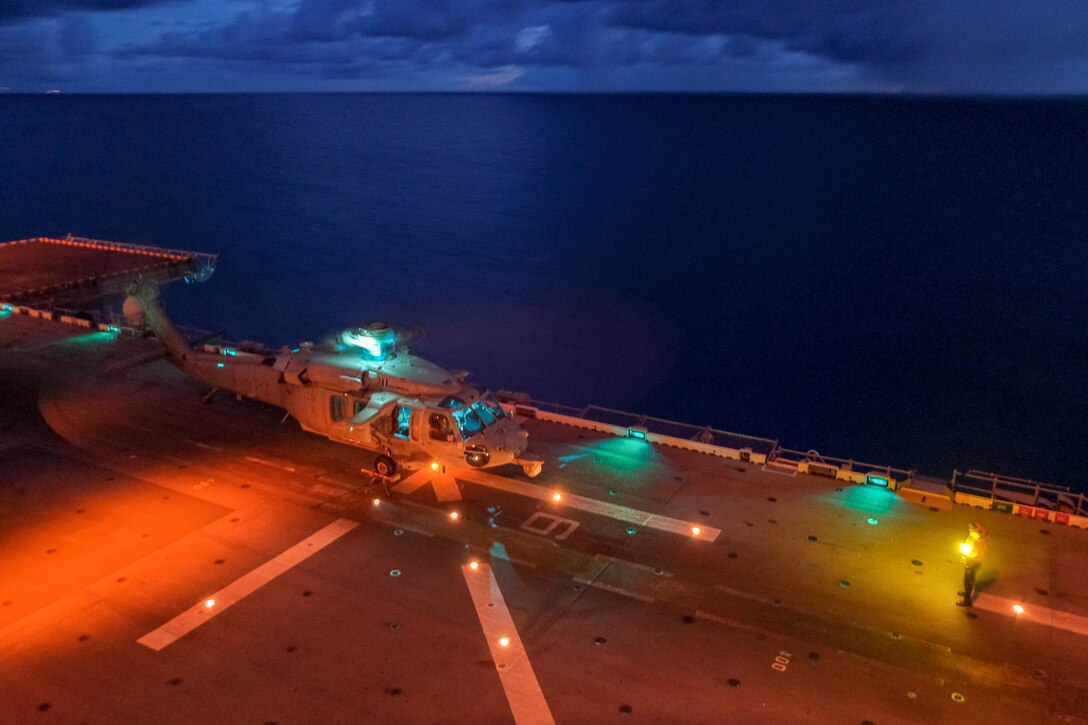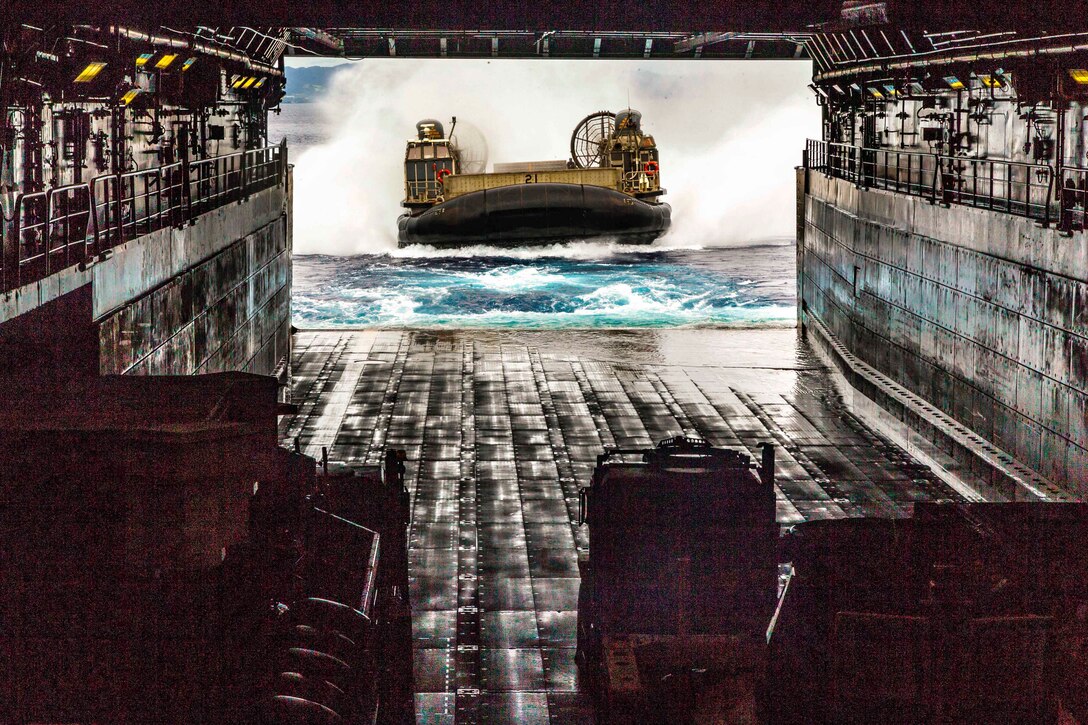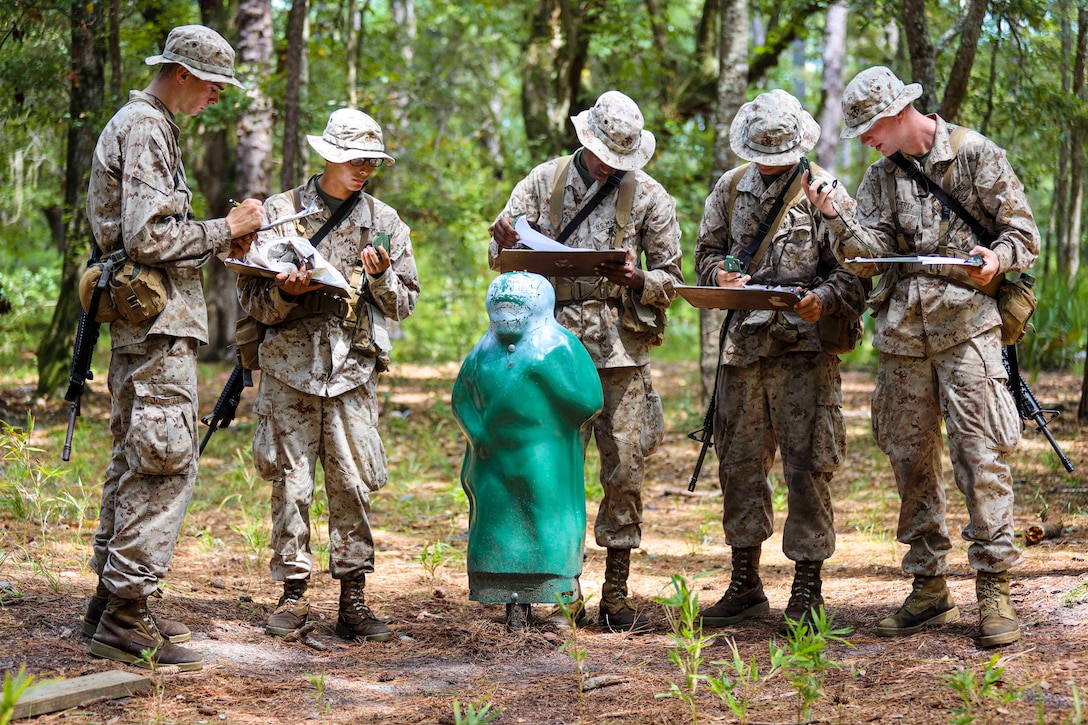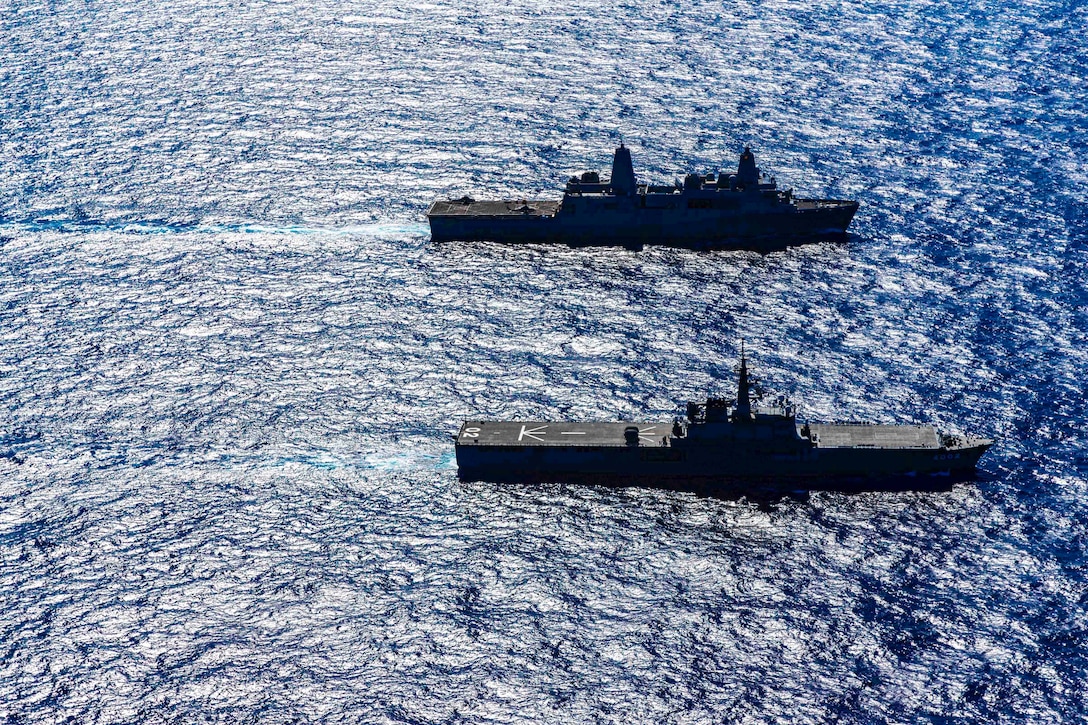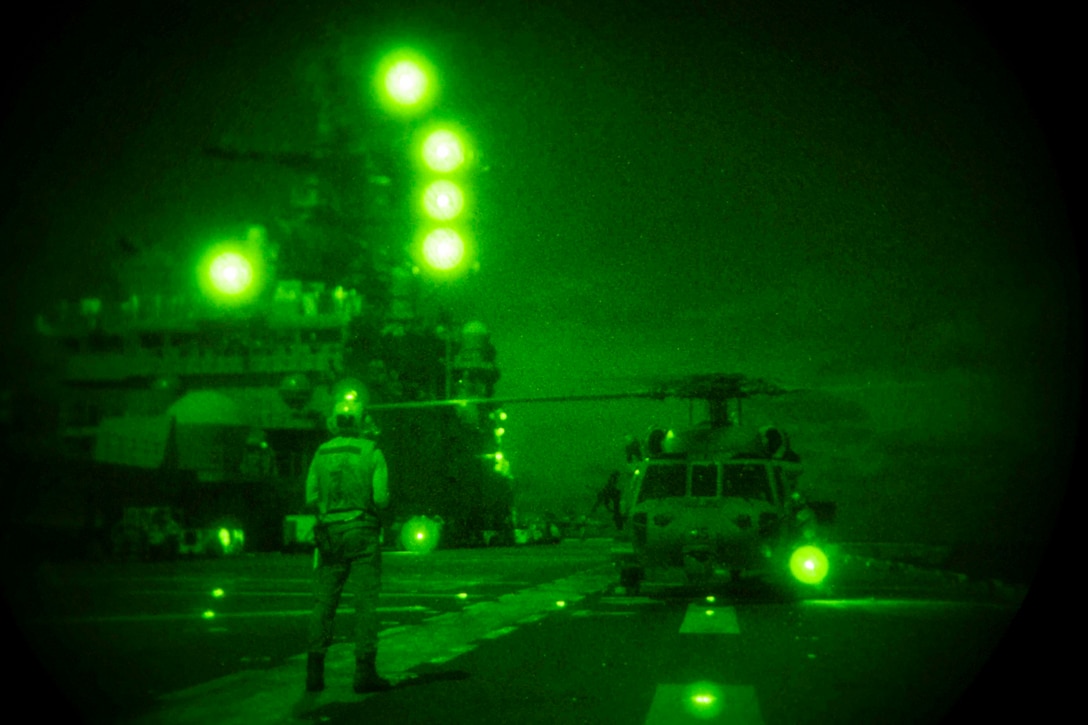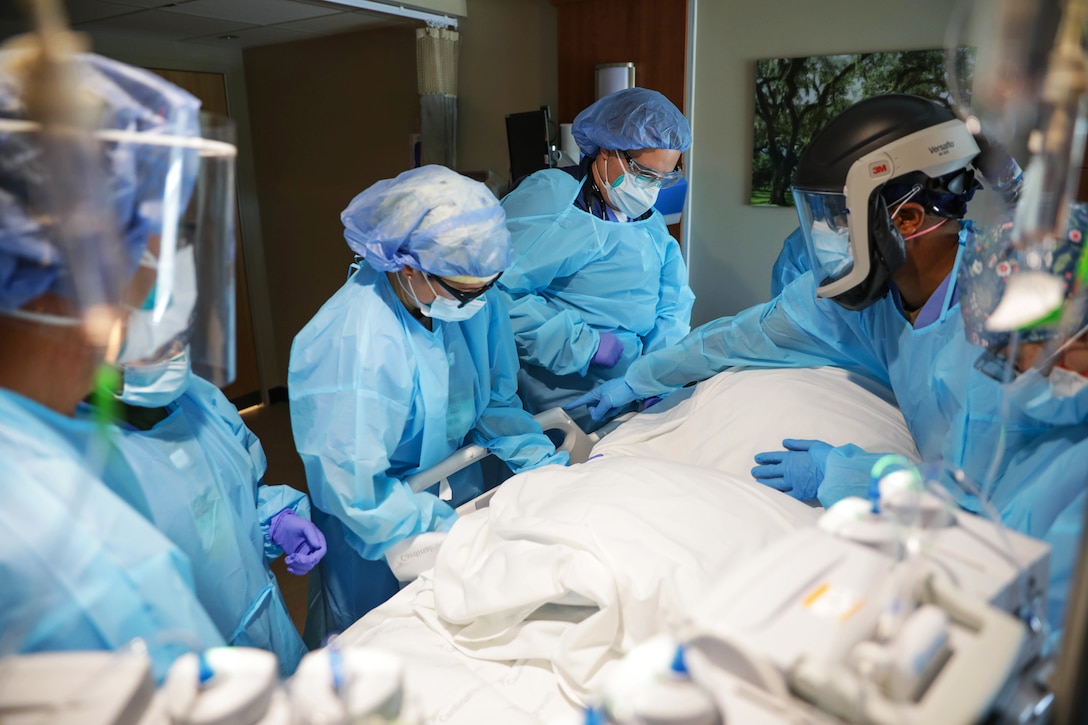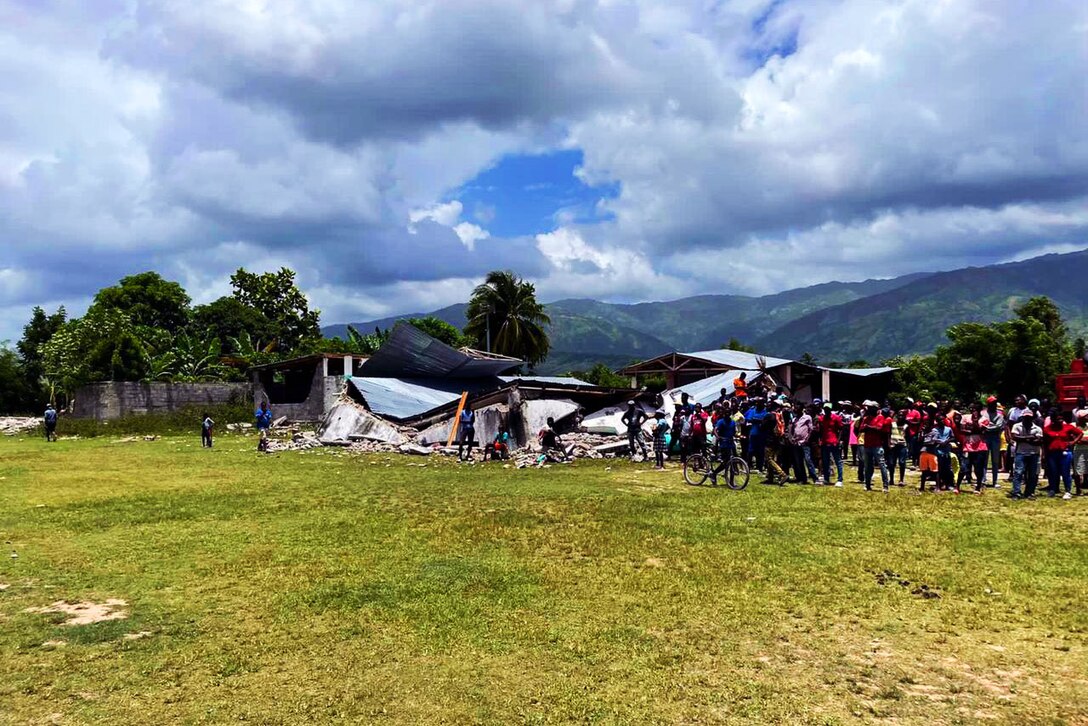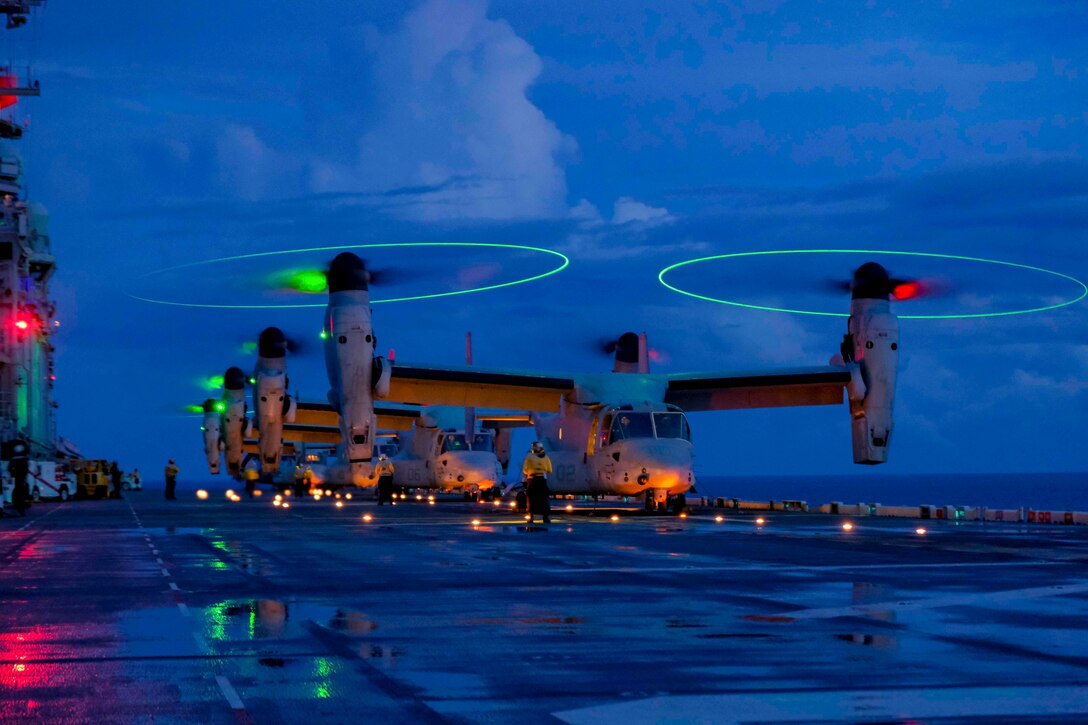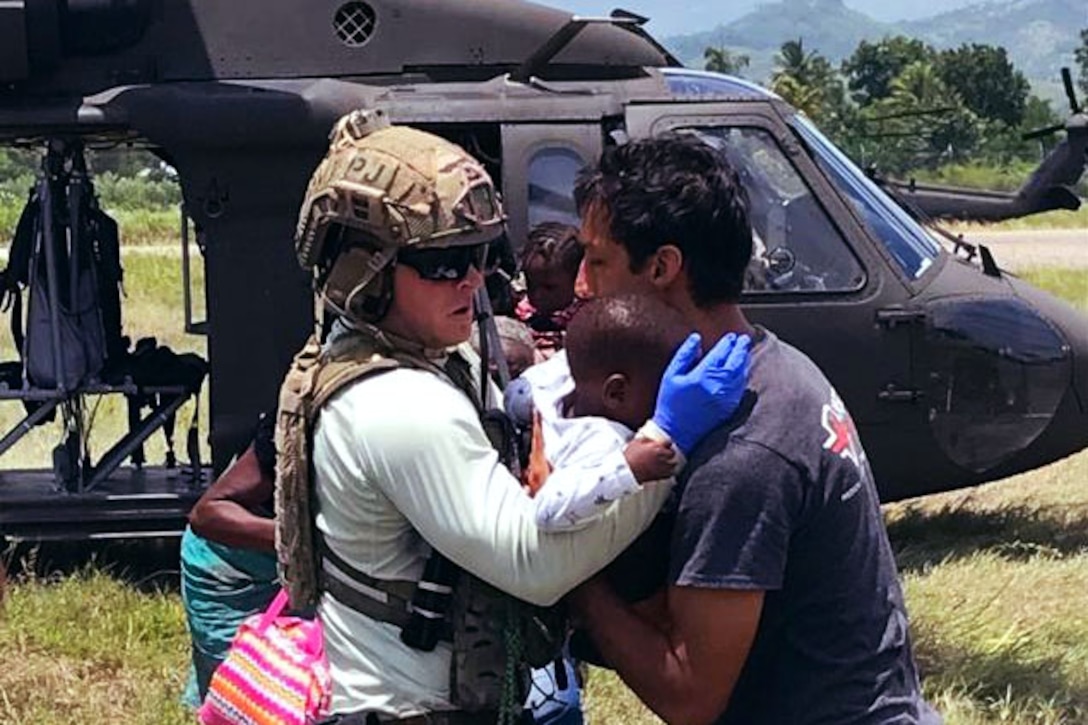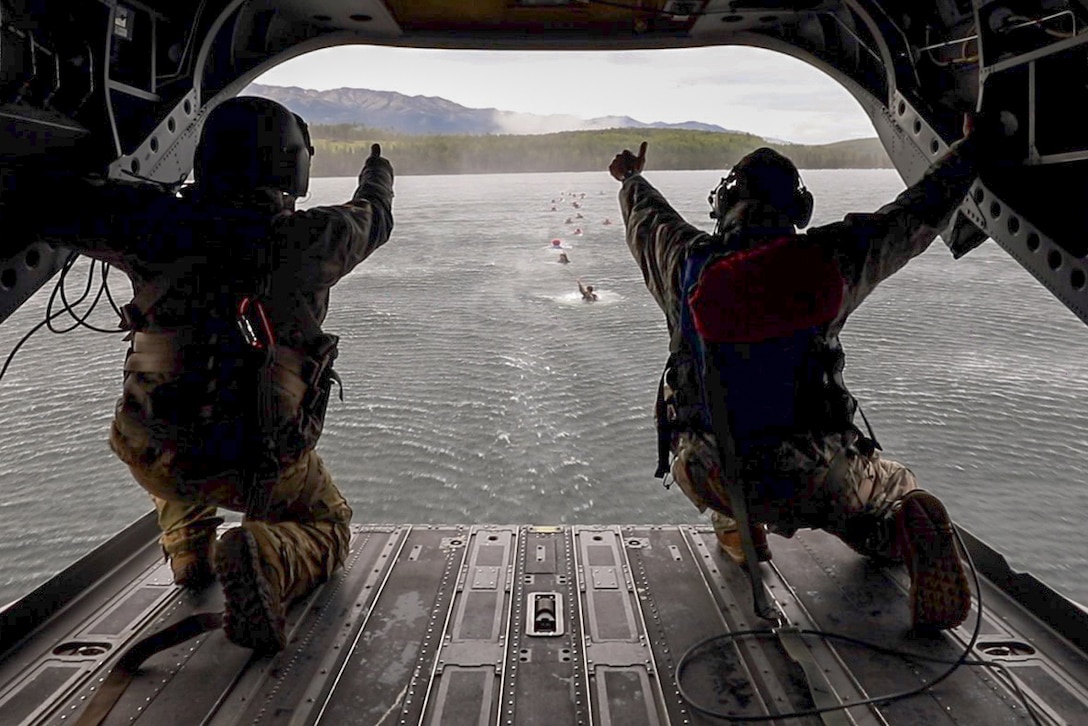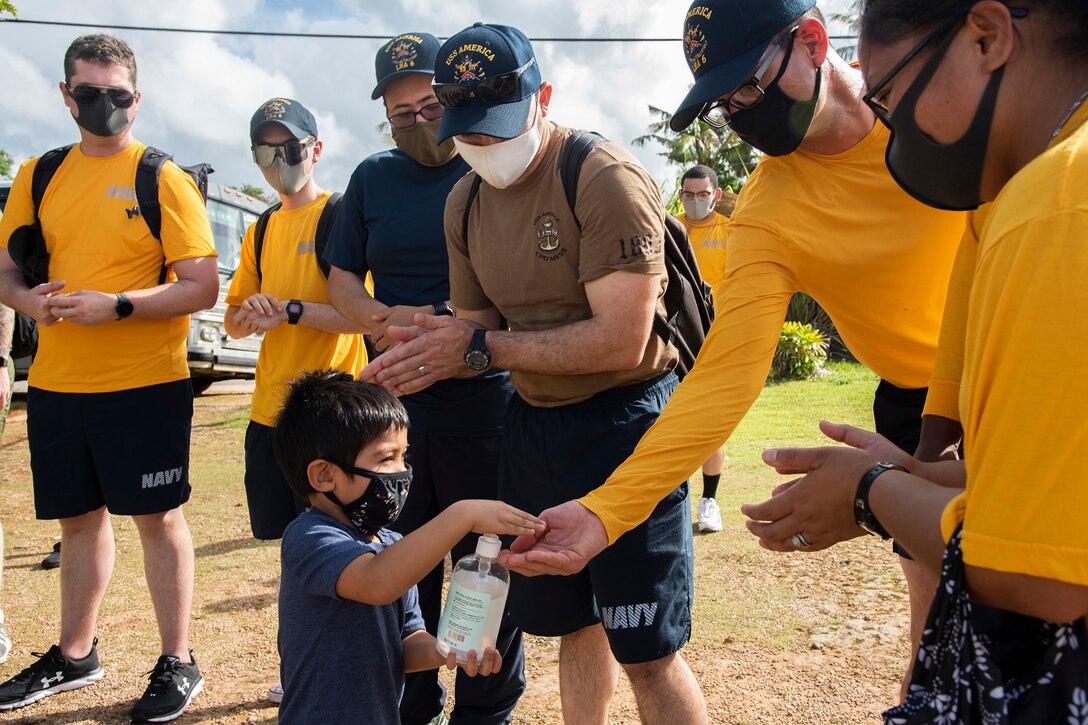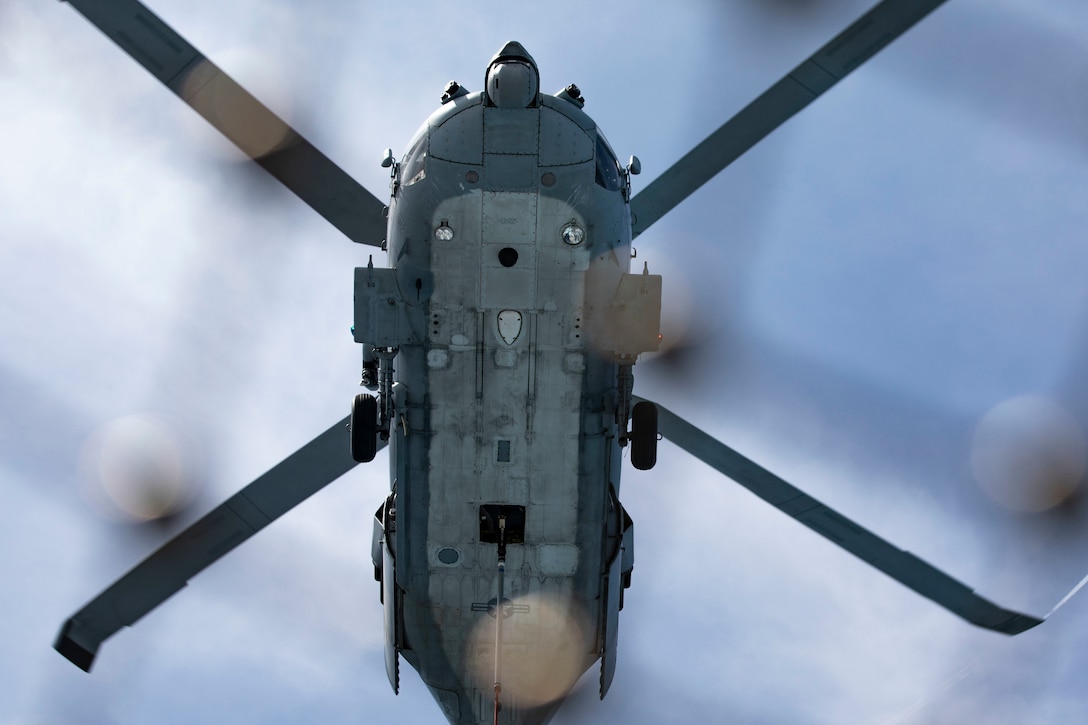Aug. 24, 2021
Pentagon Press Secretary John F. Kirby; Major
General Hank Taylor, Deputy Director of the Joint Staff For Regional
Operations, J-35
MAJOR GENERAL HANK TAYLOR: Good morning, everyone,
thank you for being here. I have several updates for you. I'll start
with an Afghanistan evacuation update and then with a snapshot of relief
operations in -- in Haiti.
First, Afghanistan, specifically Kabul -- I'm pleased to report our
best departure results since evacuation operations began, happened in
the last 24 hours, where 37 U.S. military aircraft, 32 C-17s, five
C-130s departed from Kabul with approximately 12,700 personnel. On top
of that, 57 coalition and partner aircraft left Kabul with 8,900
personnel. This tremendous display of teamwork and focus resulted in a
passenger count of 21,600 individuals leaving Afghanistan in just 24
hours.
To date, 63,900 American citizens, NATO and other partners'
personnel, Afghan SIV [Special Immigrant Visas] applicants and
vulnerable Afghans are out of harm's way, now safer and on their journey
to a better life. And a majority of these people, approximately 58,700
of them, have left just since August 14th.
I want to reiterate that we're able to achieve this level of
increased departures because of U.S. military personnel and our
partners' work around the clock to conduct this highly important
mission, including airport security and flight operation. To that end,
we're seeing increased pace and -- increased pace in the flight schedule
at Kabul. As of yesterday, in the last 24 hour period, one aircraft
left on or about every 45 minutes.
As we look beyond Kabul and in order to maintain the steady flow out
of Afghanistan, we rely on the intermediate staging bases and safe
havens in both CENTCOM [U.S. Central Command] and the EUCOM [U.S.
European Command] AORs [Areas of Responsibility]. We've been focused on
building capacity while also rapidly processing and facilitating onward
movement.
It has been challenging to keep up with the flow but we have made
progress in caring for and safeguarding these vulnerable individuals and
getting them moving onward. We are committed to doing more and to
continue to expand and improve our facilities, from adding shelter to
additional sanitation, hand-washing stations, refrigeration trucks,
providing cold water and the appropriate food, and we're working with
our partners to increase this capacity as soon as possible.
In the EUCOM AOR, Afghans transitioning through Ramstein Air Base,
Germany have started departing to onward destinations. So far, five
aircraft and more than 800 travelers who have been screened and cleared
for entry departed for the United States.
EUCOM has received nearly 8,000 evacuees since August 20th and is
considering other installations in Germany, Italy and Spain, in
preparation to receive more flights, to allow greater throughput to the
United States.
As I mentioned yesterday, the number of temporary safe haven
locations across Europe and the Middle East now stands at 14. This
allows us to expedite movement out of Kabul and gives us flexibility
from these intermediate staging bases. We are appreciative of the
support in this global effort from our allies and partners. We remain
focused on the mission of bringing as many people home as we can and as
quickly as we can.
An update on NORTHCOM [U.S. Northern Command] operations -- in the
past 24 hours, four flights landed at Dulles International Airport with
more than 1,000 passengers. Again, these passengers and their families
will go to one of the four military installations designated as
processing locations.
All of this progress stems from the teamwork and professionalism and
-- especially of our interagency partners here in the states. We know
more hard work remains -- that our personnel in Afghanistan remain
vigilant, and we share the sense of urgency in this effort. We'll
continue to keep you updated on Afghanistan through the week.
Lastly, as we look at Haiti, the Department of Defense continues
support of USAID relief efforts in Haiti. Over the last 24 hours, Joint
Task Force Haiti conducted 56 missions, assisted in the saving of 40
lives and delivered more than 35,000 pounds of goods, supplies and
medical supplies to the people affected by the 7.2 magnitude earthquake
in Haiti.
Four United States Marine Corps MV-22 Ospreys arrived to provide
additional options for personnel and supply movement. These air assets
are in addition to the 18 U.S. military and Coast Guard aircraft already
supporting humanitarian relief operations. U.S. maritime vessels
continue support also.
That concludes my update.
PRESS SECRETARY JOHN F. KIRBY: Thank you, General. OK, before we get
to questions, I just have a slight update on the baby count. As the
General let you know yesterday, three babies total. Just to clarify, one
was born on the C-17 -- that's the one I think you guys know about --
the other two were born shortly after arrival at Ramstein in the
Landstuhl Hospital, there, on base. So two were born in the hospital
shortly after arrival.
I am told that moms and dads and babies are all fine and healthy and
all is looking good there, and if we can get more information on this,
I'll be able to provide it a little bit later.
Lita?
Q: John, a couple of questions. I know that you are not going to be
able to answer whether or not the deadline is going to be extended
beyond the 31st but can you give us some perspective from the military
-- can you get all Americans out in the next several days, by the 31st?
Do you need more military bases in the United States to house them? Do
you need more throughput in order to get that done? And do you need to
increase the pace?
And one ...
MR. KIRBY: No, no, go ahead, keep going.
Q: No -- and the other day, the General told us that there were about
2,500, I think, Americans that had gotten out. But that number has
increased over the last several days, about how many have gotten out so
far?
MR. KIRBY: About how many ...
Q: Americans.
MR. KIRBY: I'm going to miss some of these, Lita, so just walk me
back. You're -- you're right, there's been no change to the timeline of
the mission which is to have this completed by the end of the month.
We continue to make progress every day in getting Americans as well
as SIV applicants and vulnerable Afghans out. And you heard the numbers
that the general briefed just a minute ago. And the vast, vast majority
of these individuals are Afghans.
So we remain committed to getting any and all Americans that want to
leave to get them out and we still believe, certainly now that we have
been able to increase the capacity in the flow, we believe that we have
the capability -- the ability to get that done by the end of the month.
You asked for, I think, bases here in the United States was another one of your questions.
Q: Will you need to increase the number?
MR. KIRBY: It's possible that we might be looking at additional U.S.
military installations here in the United States. Right now we are
looking -- we're working with four of them, Fort Lee, Fort McCoy, Fort
Bliss and Joint Base McGuire-Dix-Lakehurst in New Jersey. Those are the
four that are operating now and are beginning to see a flow of SIV
applicants.
It is very well possible that we could need to use additional U.S.
military installations here stateside. And as we make those decisions
and as we're able to announce them we certainly will.
But we want to make sure that, just like we wanted to make sure in
Kabul, that airlift wasn't a limiting factor, we want to make sure that
when we get these individuals to the United States that temporary, safe,
secure and accessible temporary lodging is not -- is not the limiting
factor to their ability to get on with their new lives and to finish the
process.
I'm sure you had like three other ones that I forgot.
Q: The Americans -- the General at one point told us that 2,500 had
gotten out. What is your assessment now as to the number that have
gotten out of Afghanistan? And do you think you can get all of them out
--
MR. KIRBY: I think I answered the second part of that first -- I
think we -- I think for all Americans who want to leave the State
Department is working very hard to contact them and we are getting them
out every day.
And that's not going to change. I understand the question about the
specific detail. I would just tell you that several thousand, we know
that, several thousand Americans have been safely evacuated from
Afghanistan. I understand that's not the degree of specificity that you
want, but that is as far as I'm going to be able to go today, several
thousand.
And to include, you know -- several hundred just yesterday were able
to get onto the airport for follow-on transportation. So it's every day
we are moving Americans out of the country.
Tara?
Q: Barring any factors besides weather, do you anticipate that DoD
[Department of Defense] will be able to keep this pace up another 20,000
in the next couple days to, you know, maybe have 100,000 evacuated
before the end of the week?
MR. KIRBY: That's definitely the plan, Tara. But as you know, the
throughput is a function of many different factors, including even
weather. So, our plan is to continue this pace as aggressively as we
can. You heard General Lyons speak to that I think very specifically
yesterday. That's the goal. That's the intention.
Q: One final one for you. The babies that were born on the aircraft
and on U.S. side of the military base are they considered American
citizens? We've gotten that question a lot.
MR. KIRBY: You know, that's a good question. I do not know the answer
to that. I'm probably going to have to punt to my colleagues at the
State Department or Immigration. I don't know the answer to that. And
just to remind you, it was one born on the aircraft actually in flight;
two born at Landstuhl shortly after the flight arrived into Ramstein. If
I can get you any more details, I certainly will.
Q: And one last one on the expansion effort -- there's a fed biz
[federal business] opportunity now for seeking Farsi and Pashto speakers
for Keesler Air Force Base. Is Keesler going to be one of the expansion
sites ...
MR. KIRBY: I don't have any announcements on future possible
installations that might be of use. We will do this in a rolling
fashion, Tara , if and when we decide we need additional installations,
we'll let you guys know as soon as we possibly can.
Yeah, Jen?
Q: John, has the U.S. started preparations to leave? In order to
leave by August 31st, when does the U.S. military have to begin making
those preps, when does that decision have to be made?
MR. KIRBY: So I'm not going to get into a specific tick tock here.
Just as when we were talking about the retrograde out of Afghanistan
writ large for the military, we were very careful about the details we
provided. The threat environment is very real around the airport, so I
am going to be equally as judicious about the kind of information that
we give out.
But roughly speaking, you -- you need at least several days to get
the amount of forces and equipment that we have at the airport to get
that safely and effectively retrograded. I won't get into a specific
tick tock.
And this is going to be the pace and whatever the daily extraction is
going to be, that's going to be up to the commanders on the ground to
determine what they're going to move and -- and how and when they're
going to do it because we have a concomitant mission all the way through
to continue these evacuations. So you have to be able to do both and
it's a balance and -- and the Secretary's going to trust the judgment of
our commanders on the ground to properly meet that balance.
Q: But it sounds like you're still working on an August 31st deadline.
MR. KIRBY: We're absolutely still aiming towards the end of the month.
Q: And are the public statements by the Taliban the same as the
private statements being made to U.S. officials about the deadline and
when U.S. should leave?
MR. KIRBY: What I can tell you is that the Taliban have been very clear about what their expectations are as well.
Q: But the public and private statements are the same?
MR. KIRBY: Without getting into details, I -- I'm not seeing much dissonance.
Q: And can you give any more details about the firefight that took
place today, a second firefight outside the airport and that there were
some arrests by the -- by the Taliban of some so-called ISIS people
taking videos of the airport?
MAJ. GEN. TAYLOR: I don't have those details. We're -- we're working
with CENTCOM [U.S. Central Command] right now as that, you know, is
currently ongoing. So I know that CENTCOM has continued to do that and
there is no security, if you would, breach or any problems there, that
security of the airfield.
Q: Is the U.S. providing any intel to the Taliban about an ISIS threat?
MAJ. GEN. TAYLOR: I know the commanders on the ground continue to
communicate to ensure that the safety of not only around the gates but
at the other checkpoints so that we can continue to process vulnerable
Afghans, you know, other coalition folks and American citizens in.
MR. KIRBY: OK, let me go over here. Dave?
Q: When this evacuation began, there were already close to 1,000 U.S.
troops at that airport. So just to be clear, when we're talking about
pulling U.S. troops out, we're -- we're talking about pulling all the
troops, so you go to zero at the -- at the embassy? Is that correct?
MR. KIRBY: I followed the question. That's correct.
Q: So you have to take out more than you put in?
MR. KIRBY: Yes -- yes, I'm -- I'm ...
Q: So how does -- how does that happen without the active cooperation
of the Taliban to keep the crowds away as U.S. troops first thin out
their perimeter and then pull back? How does ...
MR. KIRBY: I’m going to let the General take that for just a second
because I think he's much more informed than I am about this.
But I would just like to make the larger issue that -- that any
retrograde out of -- or drawdown, if you will, out of an -- an
environment that you can't assume is always going to be permissive is
one that has to be done very carefully and it has to be sequenced in a
very methodical way so that the safety and security of our people and
the people we're trying to protect is considered of paramount
importance.
And so we aren't going to -- and I'll level set with you now, we're
not going to be able to tell you -- you know, once we start to affect
this withdrawal whenever -- you know -- and -- and like I said, we're
still planning on the end of the month -- whenever we start it, we're
not going to be able to provide a tick tock every day of exactly what
we're moving out and at what pace, so that we can limit vulnerabilities
in the information space and in the actual physical space of the airport
as we move out.
But it's all done in a very careful, methodical way so that you can
preserve as much capability to the very end as you need, as well as
security, and not -- not just the security for our folks but the
security for the people that we're trying to safely evacuate.
But I'll turn it over to the General in case he has more detail.
MAJ. GEN. TAYLOR: Hey, Mr. Kirby, I mean, you covered that very well.
I just -- would add to that is, you know, security is paramount during
any, you know, phase of an operation. So as you look at -- as we go
forward here, the commanders are going to continually communicate,
coordinate to ensure that security is set to allow all those flight
operations, all those things to continue to the end.
Q: Does the methodical, orderly withdrawal that he just referred to, does that require the assistance of the Taliban?
MAJ. GEN. TAYLOR: I mean, it requires the coordination that I think we're doing right now to maintain that security.
MR. KIRBY: Yeah, there's no -- there's no question David, as we work
through this, that the daily communication with the Taliban commanders
is going to have to continue. That's just a -- that's just a hard fact.
Q: Does -- does their promise of cooperation expire on August 31st?
MR. KIRBY: Well, I'm not going to speculate about the -- or even
speak for -- for them or for their intentions. Again, the mission has
been to end on the 31st. That is the assumption that we are working
towards and we'll just have to keep moving forward.
Carla ?
Q: Thank you. Is there any additional air evacuations in the city of
Kabul? Has the U.S. military done any evacuations of any sort outside of
the city of Kabul? Cause there are still lots of Americans that aren't
even in Kabul.
MR. KIRBY: I -- I'll let the General take that.
MAJ. GEN. TAYLOR: So the -- when you talk about evacuations, you mean
going out and -- we continue to closely coordinate to ensure the safe
arrival of Americans and others on HKIA [Hamid Karzai International
Airport]. So we have not gone any further [with] air operations this
time, but as I said earlier, we continue to ensure the capabilities that
we've had and as required that we're able to do so.
Q: Is there a plan in place to help extract Americans who are outside of Kabul at this point?
MAJ. GEN. TAYLOR: We are always planning and assessing what needs to be done to help Americans get to HKIA, to Kabul Airport.
MR. KIRBY: I haven't gotten to the phones at all, so let me start
doing that. I need my glasses again. Jack Detsch from Foreign Policy.
Q: Thanks, John. I'm just wondering do you have a specific update on
the throughput now? Obviously you've aviated the 5,000 and 9,000 number.
I know you mentioned the 30 C-17 evac flights. But just wondering if
there's a specific update on what your goals are for daily throughput?
MAJ. GEN. TAYLOR: I think as you go back to what General Lyons said
last night and that right now the pace, the throughput that we're able
to maintain, as I said earlier, is about a plane every 45 minutes. But
also that is also driven upon the requirement of what needs to be taken
out. So right now we assess that we have the required airflow not only
U.S. military, but as you said, you saw those numbers of our coalition,
our other partners that are coming.
And we asses that we will be able to maintain the throughput that we
have seen in the last two days and then we will continue to assess what
those requirements from here forward of what we have to get that
throughout into Kabul.
Q: So you're looking at about 20,000 per day?
MR. KIRBY: Actually -- I'll field ... We're trying to get as many out
as we can. And so if we can exceed what our previous expectations were
and we have over the last couple of days that's a good thing and we're
going to continue to drive at that.
Idrees ?
Q: Two quick questions. First thing, is the intention to get every
American out who wants to leave plus as many as SIV holders or
applicants? Or is it to get out all Americans plus as many Afghans out
as possible by the August deadline?
MR. KIRBY: As many Americans who want to leave that we can get as
fast as possible. As many of our SIV applicants who we can get to the
airport and get them out as fast as possible. As many vulnerable Afghans
that we can also work towards getting. But it's -- we understand the
challenges of time and space here. We're mindful of that.
That's why we are trying to continue to keep up this capacity and even improve it if we can.
Q: And just a follow-up to the Lita’s question, you said you have the
ability to get all Americans out who want to leave and you said several
thousand. Do you have a percentage for how many Americans have been
removed, without giving a number? More than half been removed?
MR. KIRBY: I can't give you that number, Idrees, because I don't
think there's a perfect number that we know with certainty of all
Americans in Afghanistan. There's no requirement -- you can't force an
American when they go to a foreign country to tell you that they're
there. Now we encourage them to that. The State Department has a robust
set of communication vehicles at their disposal especially in a country
like Afghanistan.
We want to know when Americans are there but they don't -- they don't
have to tell us. So that's why it's difficult for us to give you the
denominator here. How many are there and -- what I can tell you is, and
this is out of my lane but I'll do it anyway, I mean the State
Department has been working very hard to reach out to those who they
know are there or even who they hear are there to communicate to them,
to let them know what evacuation plans are possible and achievable for
them.
So they're working very hard at this. Our job at the Defense
Department is to -- is to help facilitate them -- their safe passage to
the airport and then getting them manifested and getting them on a plane
out.
Q: But of the ones who have registered, have more or less than half of the Americans who have registered been evacuated?
MR. KIRBY: I do not know. I don't. You'd have to go to the State
Department for what they think they have on the registry. But I think
even they would tell you, Idrees, that it is an imperfect database
because not every American has to register. So it's perfectly
conceivable that you might have an American who nobody knew was in
Afghanistan but still pipes up on the net and says I want to get out.
And we're going to help that person get out to the best ability that we
can.
Barbara ?
Q: I don’t really understand this. This is the answer we've gotten
for days and days and days from every podium in this town. Even if this
administration does not have the denominator that is not my question. My
question is, can this administration tell the American people how many
Americans it has evacuated from Afghanistan? And if you cannot, can you
please explain not the denominator --
MR. KIRBY: I understand, Barbara.
Q: -- why can't you just say the number?
MR. KIRBY: Barbara, I think we're just going to leave it at several
thousand right now. And I understand that's not a satisfying answer to
you. I would tell you that the number literally changes almost by the
hour. It --
Q: So does everything else.
MR. KIRBY: I understand, Barbara. We're going to leave it at several thousand for right now.
Helene ?
Q: May I have a follow-up since everybody else asked like eight questions?
(Laughter)
Q: Thank you. I have two other follow-ups, if I may. Just to clarify
General Taylor's answer, if there have been no missions outside of Kabul
can you tell us about missions that have taken place at least outside
essentially the fence line of the airport? And my other follow-up is, as
you prepare to depart, whenever that happens, your previous retrograde,
as you called it, included previsions for destructions of weapons
in-place. Can we assume that this part of the effort to leave
Afghanistan will also include that what you cannot put on an airplane …
any weapons you can't put on an airplane or dangerous items you would
destroy in-place?
MR. KIRBY: I think the General answered your first question. There's
no other additional operations to speak to. We continue to facilitate
safe passage.
Q: Outside of Kabul, I believe. I'm asking --
MR. KIRBY: There are no -- there are no additional operations to speak to that I'm aware of.
MAJ. GEN. TAYLOR: None outside.
MR. KIRBY: -- outside the airport either. But we continue to
facilitate safe passage for Americans and SIVs as they need to get to
the airport. And as I mentioned to Lita, just in the last 24-hours I can
tell you that several hundred Americans have made it safely to airport
gates for further on transportation.
Q: With U.S. government assistance, then?
MR. KIRBY: I'm just going to leave it at that, Barb. And as for your
question on retrograde, the short answer is, yes. As a part of any
retrograde, and I know that's a technical Pentagon term that but the
drawdown of both people and equipment will be done in the same manner
that we would do it anywhere else. And obviously there's a strong bias
to be able to get our material out with our people. If there needs to be
destruction or other disposition of equipment there at Hamid Karzai
International Airport then we'll do that and we'll do that
appropriately.
Carla, did I get you already?
Q: I have an ABC question though.
CROSSTALK
MR. KIRBY: All right we'll come back to you. My fault -- my fault -- my fault. Helene ?
Q: Thank you. Can I ask you both about the bottlenecks? Because you
got 20,000 people out in the last 24-hours which is a big number, the
biggest you've had yet. Do you have 20,000 people now inside the airport
to get out in the next 24-horus? Or are there bottlenecks that are
preventing people from getting in and getting people on the planes and
those planes in the air because there's nowhere to receive them?
MAJ. GEN. TAYLOR: Yeah, I'll talk about bottlenecks, and I -- I think
I talked a little bit about that earlier. And as we -- those that
depart Kabul and get to those staging bases within EUCOM or, you know,
CENTCOM AOR, that is the coordination that I was talking about earlier,
to ensure that we place, you know, evacuees in one of those 14 locations
there to prevent a bottleneck so that as our increased throughput --
as, you know, increase that number that they're able to hold there,
CENTCOM and EUCOM are continuing to coordinate together, and with the
Joint Staff and TRANSCOM [U.S. Transportation Command], of where to put
those evacuees to allow flights to continue to leave Kabul.
So as we look at those on Kabul, there is no constraint of allowing
flights to leave today. We still expect the throughput that we saw in
the last two days to be able to continue with no bottleneck at others.
We continue to manage that on an hourly, minute basis to ensure we know
where to fly people to.
Q: And do you have enough people in the airport compound now in Kabul in order to ...
(CROSSTALK)
MAJ. GEN. TAYLOR: ... I don't have the exact number in Kabul but
there are evacuees on Kabul right now being processed through all stages
of, you know, the process there to be ready to fly.
Q: But you don't have the number?
MAJ. GEN. TAYLOR: I don't have the exact number. I don't just -- when I left here -- but we have folks ready to evacuate.
MR. KIRBY: We can get you the number that's on the airport now. It
does -- as the General said, it -- it literally changes by the hour. I
mean, if you think about what we did yesterday, at -- it's virtually --
you just do the math, it's almost 1,000 people per hour over the last 24
hours. So it changes a lot.
So I -- we'll -- it's a fair question. We'll -- we'll take it, we'll
get you the number of what there's now. I would just caution you to
understand that that number constantly changes. That's the whole goal,
is to -- is to keep the throughput.
So you get -- you get down to a certain level and then, you -- you
know, you get more and you -- you just -- so you just keep -- you keep
moving people through. It's constantly fluid.
Yeah?
Q: Thanks, John, good morning. I know you say we're -- you're fixed on August 31st as the departure ...
(CROSSTALK)
MR. KIRBY: ... hang on just a second. Brook, I think we can probably
find that number now. Can you just go get it and -- and bring it up here
so we don't have to wait until the end of the briefing?
I'm sorry, go ahead.
Q: You had said earlier you're fixed on August 31st as the departure
date. Nevertheless, there is some discussion of the possibility of
changing that mission. Does something like that fall under what you
would call sometimes "speculation" or does that fall under what you
would call "planning"? Because you've always made the distinction
between those two when we ask you about the possibility of things and --
and I'm just trying to get clarity on that. Thanks.
MR. KIRBY: I'm not completely sure I understand the question, so let
me take a stab at it and if I fail, you can tell me I failed.
Q: I would never do that.
MR. KIRBY: The President's direction has been to complete this
withdrawal -- this evacuation and withdrawal by the 31st of August. That
is the -- that is the direction that we are operating under, and
therefore, that is driving a lot of our plans.
You heard us say and you heard the Secretary say that if there needed
to be a conversation about changing that, that he would have that
conversation. I'm not going to get into internal deliberations about
what people may be thinking one way or the other.
But you heard the National Security Advisor say yesterday that --
that he believes that we can accomplish this mission by the end of the
month. So we are still driving towards the end of the month, that's
where we are now, and if and when there's any change to that, we'll
certainly, you know, make it clear to the American people.
Q: ... John, in the past couple weeks, the Pentagon has come under,
rightly or wrongly, criticism for not quote-unquote "planning for
eventualities that seemed to have happened in Kabul." And so this seems
to be a possible eventuality of a mission that might have to extend past
the deadline.
So I was just asking is there planning going on in the event that this has to happen?
MR. KIRBY: We are a planning organization, Tom. We -- we plan for all
manner of contingencies, even as we execute the orders that we've been
given, and that's what we're doing right now.
Meghann ?
Q: So you've always said that airlift is not the limiting factor
here. Obviously there are a lot more people getting into the airport and
getting out. What do you attribute that to? Is that expanding the
perimeter? Are there checkpoints that are getting more people through?
And we know we don't have the number of how many people are on HKIA
right now but about how long are they spending there before they're able
to get on a plane?
MAJ. GEN. TAYLOR: Yeah, so within the last 48 hours, that timeline of
staying in Kabul has been very short as -- as soon as we are getting
people in and processed. As you can see, a flight every 45 minutes is a
lot in getting people out of there.
So as we look at what have been the factors behind that, numerous --
weather continues to play a factor, great coalition and partners and
other people volunteering aircraft, and as General Lyons said yesterday,
the ability to get not only the aircraft coming into Kabul but others
providing aircraft to fly, you know, people from the -- from the lily
pads or the safe havens into the States and then moving them around has
-- has allowed us to keep that throughput going.
And then also, I think the continued ability to inform and get the
word out of how to get into the gates, where to come, the processing of
the -- those not only through the gates but the processing internally on
Kabul by our -- you know, our troops that are there continues to become
more efficient.
Q: So are there more people showing up now than there were last week, when there was so much panic?
MAJ. GEN. TAYLOR: I would say as we look at those that are showing up
with the, you know, right documentation, the -- the right people that
have come, I think is one factor that has allowed us to increase the
throughput.
MR. KIRBY: And there also have been -- there's the -- the crush of
those first few days has reduced as more order and structure around the
airport has increased, security, the processing flow itself has just
gotten better, and the crowds around the airport are smaller than they
were before.
So the situation around the airport right now is -- is just not the
same, it's not as chaotic as it was in those first couple of days.
Terace ?
Q: ... thank you for taking my question. I've spoken to service
members and spouses on one of the bases where evacuees are expected to
be housed and they have a serious concern about COVID. So what -- are
service members or anyone living on these bases being briefed to try to
ease that concern? Because obviously, as of yesterday, they're still
very concerned about that issue.
MR. KIRBY: Well, sure, and -- and they have every right to be. We are
in the midst of a pandemic and conducting one of the largest airlift
operations in recent American history is no small feat in the best of
circumstances and this one is obviously not the best of circumstances
because in addition to this, we're doing it in the midst of a COVID
pandemic.
What I can tell you is that screening occurs at every stop, at every
stage of the process, and we're doing the best we can to -- to make sure
that -- that we've got enough visibility on everyone's health. But
again, we're -- really, the focus is on getting the numbers out.
And so there's an elementary screening done at Kabul for those who
are symptomatic. Additional screening takes place at the temporary safe
havens. And then of course upon arrival, here at the United States,
there's a screening that's done as well. So it's on everybody's mind,
believe me we're also mindful of the health of our air crew and our --
and our troops at the -- at the airport. It's a constant process and
we're not leaving anything for granted. We're taking it seriously.
So we --
(CROSSTALK)
Q: If they're flagged for COVID any step of the way are they pulled then?
MR. KIRBY: I don't know the exact medical process. Let me go over
here, apparently I'm missing -- yes, go ahead. Sylvie, I'll come back to
you, I promise.
Q: OK.
Q: Thank you. Mr. Kirby, we are hearing different statements from the
White House, Pentagon. For example, number of troops operation in
Kabul, et cetera. Can you talk about why there isn't a consensus among
the highest level of United States? Is there any communication issue?
MR. KIRBY: I'm sorry, I misunderstood -- what's the dissidence that you're talking about?
Q: So, for example, Biden says Al-Qaeda gone from Afghanistan but
Blinken say, yes, there is Al-Qaeda. So we see different statement from
the White House, different coming from the Pentagon. Is there any
communication issue from the highest level?
MR. KIRBY: No. I think you're reading way more into things than you
need to. I think we're all sighted on the fact that there's still an
Al-Qaeda threat in Afghanistan and as well as Al-Qaeda affiliates that
we know are there. Nobody is -- we've said that consistently. There's no
gap in understanding here.
Q: So just, for example, (inaudible) say 11,000 American in
Afghanistan but you say 10,000 in -- 5,000 between 10,000. So different
statement that's why I have to ask.
MR. KIRBY: I -- look the Defense Department can't speak specifically
to the number of Americans in Afghanistan. I think we already addressed
this earlier in the briefing. There is no firm, certain, hard number on
that because not every American that goes to Afghanistan has to tell the
government that they're there. We have made it clear that any American
that wants to leave we're going to find a way to get to them or find a
way to get the information to them to help them make the right decisions
for transportation out of the country.
But everybody is sighted on the -- that this is a dangerous perilous
environment. There is -- it's very dynamic, it's very fluid and we're
doing the best we can to move as many people as we can as fast as we
can.
Gordon ?
Q: One follow-up. If they cannot reach the airport, people leaving,
Afghanistan, the Americans ... don't Taliban and ISIS trade for them, if
they stuck somewhere? If they cannot communicate with --
MR. KIRBY: We absolutely understand that Afghanistan is a dangerous
place right now which is why we're trying to move as many Americans as
we can as fast as we can. And we want to get that done before the end of
the month.
Gordon ?
Q: Can you address the situation of the conditions at Al Udeid and
Qatar to be described as squalid for a lot of the people coming through
there? And then if you could -- I didn't quite understand what the
General was saying earlier about the 14 different station -- like the
way stations because I understand that kind of three main hubs to be
Ramstein, Qatar and Bahrain.
So are there way more now?
MR. KIRBY: I'll let the General come up here in a second. But let me
just -- just -- just set this a little bit. So, yes, those are our three
main hubs. But we are adding to that. You've seen Italy, U.S. military
installations in Italy. U.S. military installations at Spain also
provide additional capability. And there are other countries in the Gulf
Region who are willing to take on a temporary basis for some
individuals. So it's a -- it's a bigger, broader sort of hub-and-spoke
network than it was just a few days ago. And I'll let the General fill
that out for you.
On your first question, just let me level set it right away. We are
aware of and as concerned as anybody about what have been some terrible
sanitation conditions at Qatar that were facilitated by the sheer
numbers and the speed with which those numbers got there. And we all
recognize that. And nobody, nobody here wants anyone to be less than
safe, secure, comfortable and well cared for as they go through this
process. We take it very seriously.
But we'll be the first to admit that there were conditions at Al
Udeid could have been better. They are improving now. I'm not going to
stand up here and tell you that they're perfect because they're not.
Because evacuees continue to flow into Qatar and there's a lot on the
ground right now. And as the General said, we're working hard to clear
out that population so that we can ease the pressure there and continue
to move these people along their way to their new lives.
Nobody's making excuses, nobody's ducking from this. We recognize
that things were and in many ways still are not at the level of
sanitation and good hygiene that we want. I can -- I can tell you that
from the Secretary on down, everybody's focused on trying to improve and
as a matter of fact, and you saw a statement from Central Command last
night, they are taking measures to ease that pressure and to improve
conditions there. But it's something we're going to watch not just there
but at every other temporary safe haven that we're -- that we're
operating from.
Q: Got it. And before the General speaks to the hubs can you just
speak -- clarify you said you don't there is a crush around HKIA
currently or less of one? Or can you just clarify what you meant?
MR. KIRBY: What I can -- that the -- that crowd size is smaller now
than it was in those first few days. And so we're not experiencing to
the degree we did last Monday, the physical crush and chaos. I'm not
suggesting, Gordon, that there aren't desperate people outside that
airport who want in, absolutely. We're not -- we're not ignoring that.
I'm just saying that, to Meghann's question, we're not seeing the same
pressure put on the system now that there was in the early days.
General.
MAJ. GEN. TAYLOR: First go back to [the] question. So approximately
right now, 5,000 -- a little bit over 5,000 are on HKIA going through
the processing, continuing to be manifested and ready to fly. So gates
are still open, we will continue to assess those numbers throughout the
day.
When we go back to hubs and spokes, I'll give you the macro and then
we can possible get back with you on the -- on the real details of
there. So at both within the CENTCOM and the EUCOM AOR we have main
hubs, think of Ramstein and then going into Qatar. But from there,
within the last 24 to 72-hours both of those commands have started
building up and going from an initial operating capability to get full,
what we would call smaller satellite areas to ensure that with the
throughput, that we've had, that we can safely and humanitarianly keep
those people there until their flights go back into the states.
When you specifically talk about … and I can just bring it up, just
when talking to CENTCOM this morning as we look at capabilities -- and I
-- I just talked about this a little bit earlier -- but a lot of work
has been done in the last 48 hours of, you know, bringing in more
portable hand-washing stations, refrigeration trucks to ensure there's
cool water and the food is there, to ensure that people have these
humanitarian capabilities.
MR. KIRBY: I would also say, just as a scheduling note, this
afternoon's briefing, I'll be joined by General VanHerck of Northern
Command, as well as General Wolters of European Command. So they will
also be able to address in greater detail some of these specific
questions about the temporary safe havens and you'll have a chance to
talk to them directly.
Lara?
Q: Thank you. Can you commit to evacuating the Afghan commandos and other troops that are helping with the evacuation currently?
MR. KIRBY: Yes.
Q: Yes? All of them?
MR. KIRBY: Any of them that want to leave, and we have to assume that
that's -- that's a -- all of them, they will be evacuated, yes.
Q: How many do you estimate ...
MR. KIRBY: I -- I don't have an exact number. As I -- as I think
we've talked about before, the General has somewhere in the neighborhood
of 5 to 600, we know, Afghan forces are -- are there at the -- at the
airport with us and -- and actually helping us in -- in the security
mission, and they will all be able to come out.
Q: Even if they don't have SIV ...
MR. KIRBY: They will all be able to come out.
Q: OK. And then also, just as a follow up, what has happened to the money that was intended to go for the Afghan security fund?
MR. KIRBY: Yeah. Obviously -- we're working closely with Congress on that but that -- that money is being held now.
Q: OK.
MR. KIRBY: Yeah, absolutely.
Let me go to the phones. I haven't -- in addition to not getting one
side of the room, I have not done a good job here on the phones. Dan
Lamothe?
Q: Hey, John, good morning. Thanks for taking my call. Looking to
check in, just get some of the -- just more fidelity on what's going on
at the gates. We've heard a lot of frustration with some of these
veterans groups and other organizations that are trying to assist people
to get to the gates and through the gates.
Sounds like there's, at least to some degree, in -- in --
inconsistencies on who's being allowed in, when they're being allowed
in, and -- and just some chaos there that's, to a degree, understandable
but also frustrating. Thanks.
MAJ. GEN. TAYLOR: Yeah. Gates continue -- the coordination there is
-- the critical piece of understanding getting through the checkpoints,
and that has been a lot of the work that's been done over the last 48
hours. The coordination between U.S. forces forward there, the
commanders, to ensure who comes through and what checkpoints that people
are coming through, to expedite.
And the key has been we have had an increase in information coming to
the force -- there's commanders on the ground -- of who needs to come. I
think that has been one of the -- the increase in our throughput, is
understanding in all of, you know, the populations of who is where and
who needs to come through the gates so that we can provide better
information -- which gate, when to come in -- to make sure those -- the
conditions are set to come on to HKIA.
MR. KIRBY: OK, I've got time for a couple more. Sylvie, you have been very patient.
Q: I wanted to go back to the airport. I know you don't want to speak
about the -- the deadline and, you know, the August 31st or not, but
whenever the U.S. troops are leaving, are you speaking about -- with the
Taliban about -- the Taliban or a third party -- a third country about
the security of the airport, to allow the airport to remain open?
MR. KIRBY: I'll let the General take it. I would just say that we are
in daily communication with the Taliban about the security situation at
the airport now. Our focus from a military perspective is going to be
whenever -- and -- and right now, we're -- the -- the plan is to end
this mission on the 31st of August. I don't want to suggest that that's
not what we're planning on.
As we get there, as I said earlier, we want to preserve as much
capability as long as we can to continue to conduct evacuations while
safely removing our people and our equipment all at the same time.
That's our focus right now, is on properly executing the mission and
effectively and safely drawing it down, but I'll ask the General if he
has any other thoughts.
MAJ. GEN. TAYLOR: No, I -- I just think when you talk about
transition, absolutely there is planning going on of how to transition
all of the space that we currently occupy here in the future.
MR. KIRBY: OK, well -- OK, Terace -- go ahead.
Q: Thank you so much. It's just a follow up to my previous question.
For those that are symptomatic, what are they being told when -- when
they arrive for processing? And then once they're there ...
MR. KIRBY: Being told?
Q: So once they're arriving, are they being told "hey, you know" --
like, what's the process for those who may have symptoms? I don't know
how the information -- how they're getting the information about where
they need to go, which gates they need to go to, et cetera, et cetera.
So what are they being told?
MR. KIRBY: We'll -- let me take the question and see if we can get a
more contextual answer of that. I -- I suspect what they're being told
and how the process is being done varies at each location, because there
are different demands.
Obviously demands at Hamid Karzai International Airport, in terms of
timing, is a much more urgent than it would be, you know, at Ramstein.
So where there is obviously much greater medical capability.
So I think it -- it's going to vary but I -- let me see if we can get you a better answer.
OK, I'm going to have to wrap it up. We'll see you again at 1500 --
again -- 3:00, sorry, with General VanHerck from Northern Command and
General Wolters of European Command. I will basically turn the podium
over to them and -- and I assume that that'll be the focus of the
briefing. If I need to stick around after -- for other issues, I'll do
that as well. So we'll see you later this afternoon. Thank you.
